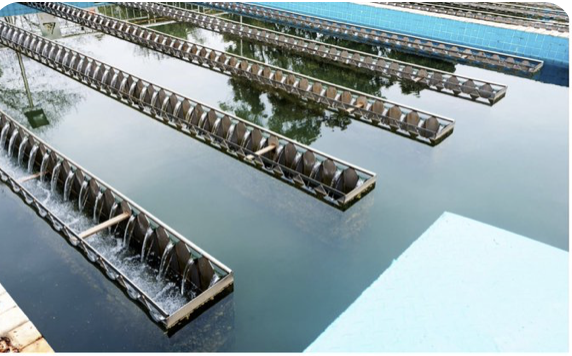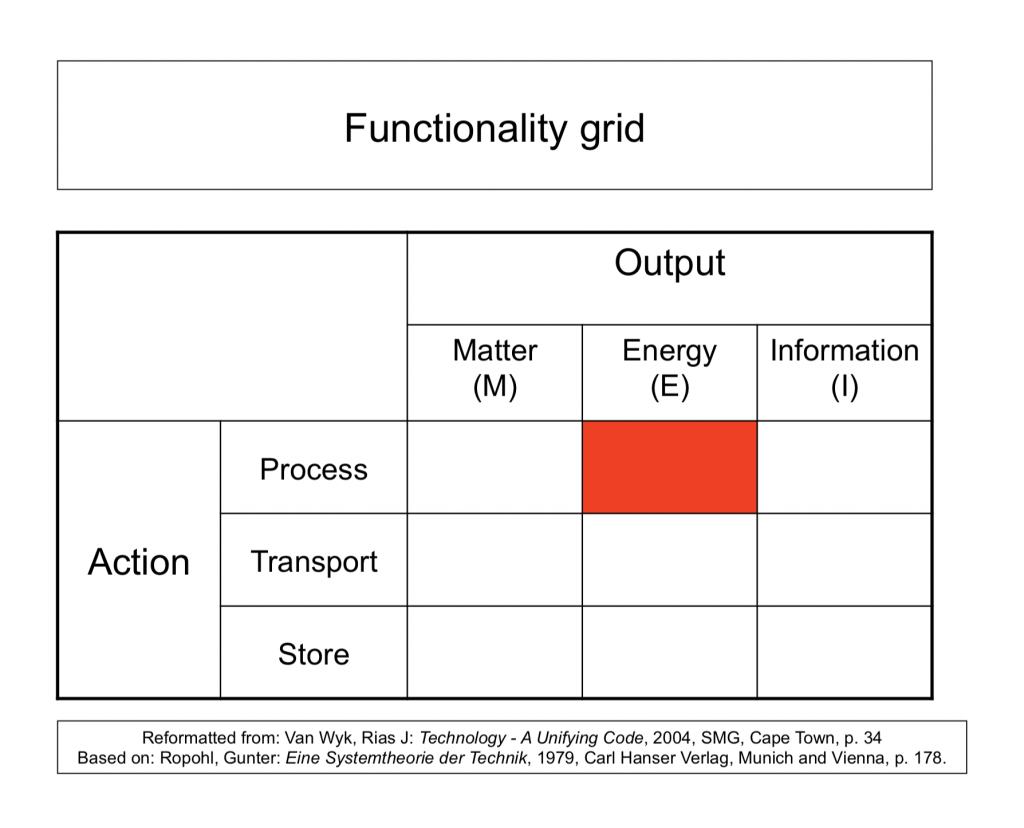
Seaside located effluent treatment that does not rely on an external energy source has been identified as a Technology Landmark for an OmegaMap. Its successful application would lessen the pollution caused by interruptions in power supply which result in untreated effluent being discharged into the ocean.
The information presented here is sourced from an article written by David Szondy, “Blue power”could make wastewater plants energy-independent”, New Atlas, July 30 2019.
Research at the University of Stanford has pointed to a process that is energy independent and carbon neutral. Its principle of operation is to use the salinity gradient that occurs when effluent is mixed with seawater. When this mixture is washed over electrodes made of Prussian Blue and polypyrrole, a battery is created.
The functionality focus is Process-Energy. Its position in the Functionality Grid is illustrated in the diagram below.
Two functional performance metrics (FPMs) can be considered. A functional performance metric that is used to express the reduction in energy needed for producing one unit of treated effluent. This would reflect an increase to the theoretical limit as external energy input becomes zero. Another functional performance metric could be output of energy related to the input of effluent. In this case: 0.65 kW/h of electricity per 1 cubic meter of effluent. Data on the improvement of this ratio is not available.
The Technology readiness level on a scale of 1-10 seems to be at TRL 4 – i.e., “Technology validated in lab”.
Technical terminology is covered in: Van Wyk, Rias, (2017) Technology: Its Fundamental Nature, Beau Bassin, Mauritius, LAP LAMBERT Academic Publishing, (http://amzn.to/2Avsk3r)
For descriptions of:
- Technology Landmark; pp. 83-84, Diagram 11.1, Stage 3
- Principle of operation; p. 20
- Functionality; pp. 24-25
- Functional performance metrics; pp. 40-43
- OmegaMap; pp. 92-93
- Functionality Grid; pp. 29-32
- Technology readiness levels; pp. 22-23
